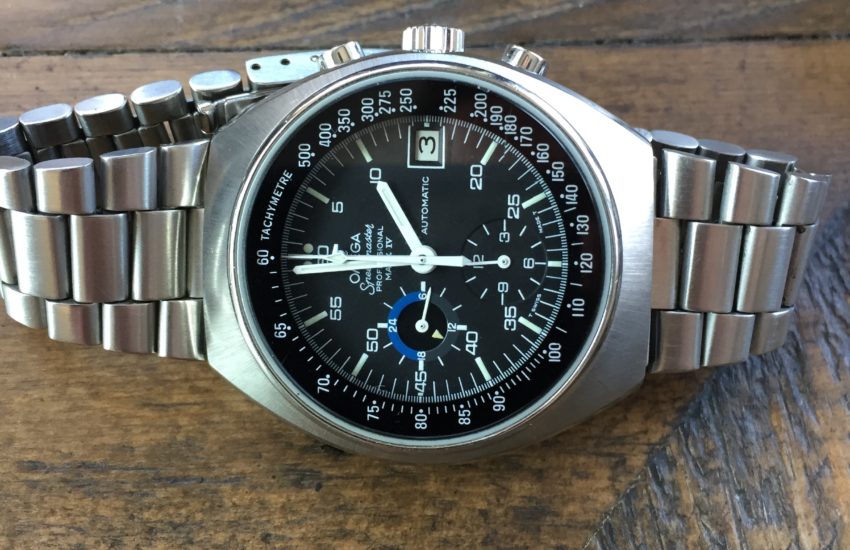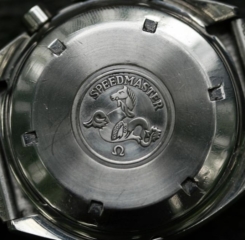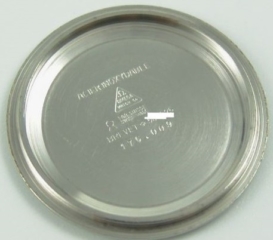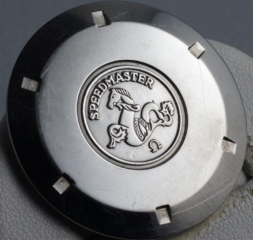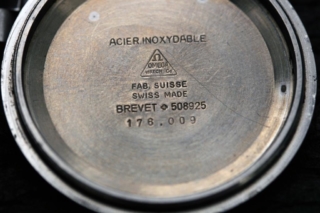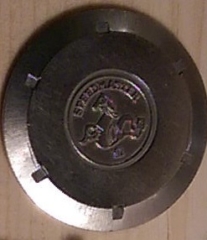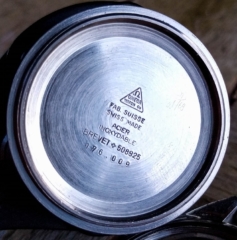General Description –
If you look at the Mark Speedmasters as evolutions of the original moonwatch, they increase in boldness, chunkiness and variation from the original in order from the 145.022 to the Mark II (big chunky case, two dial options, but still cal. 861) to the Mark III (insanely gonzo case, lots of dial options, completely new self-winding movement). The Marv IV denotes the point at which the size and style start to recede back toward some sort of moderation, relatively speaking at least. It looks like a combination of the Mark II (case shape and size) and Mark III (movement), and only came in one dial option, so by cal. 1040 standards and by Mark Speedmaster standards it’s a pretty conservative watch.
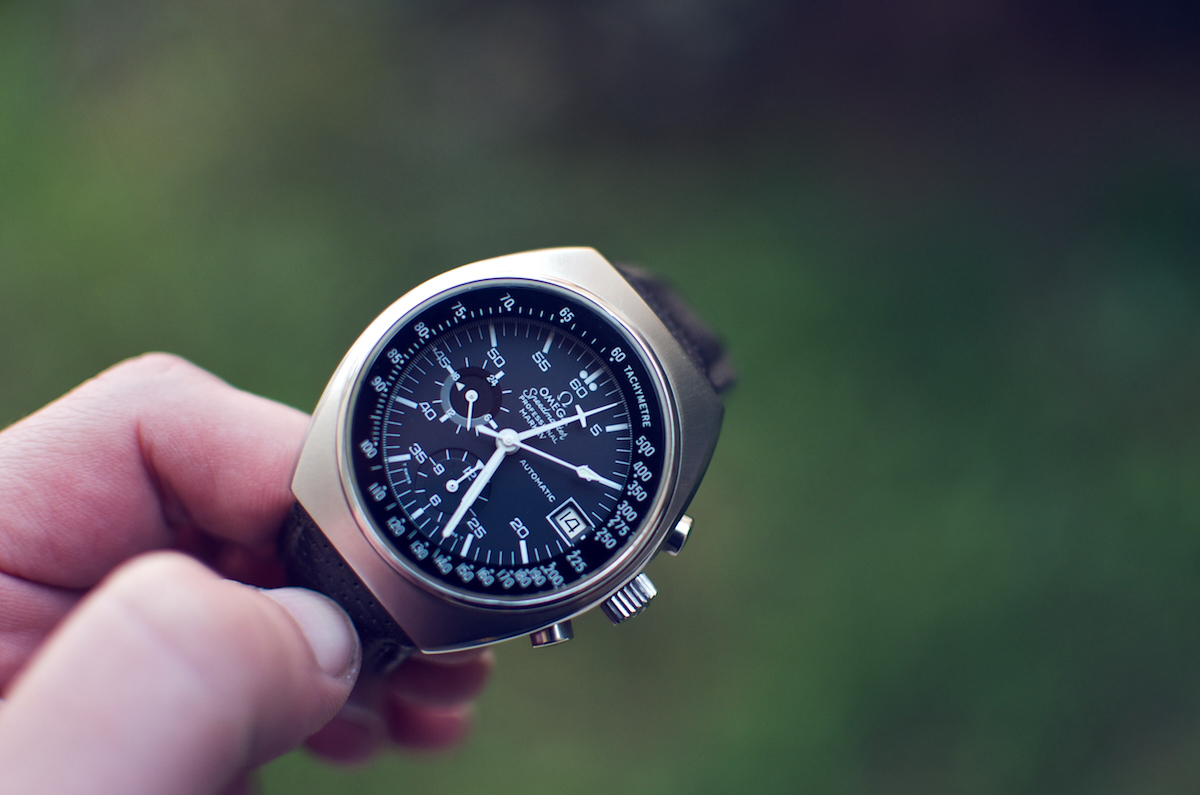
Unlike the Mark II which started out as a non-Professional and then was rebranded at some point, the Mark IV has always been a Professional. The barrel-shaped case is actually quite different from the Mark II in that it is modular – the circular inner case can be removed and from the outer case and swapped with other similar Omegas of it era like the Speedmaster 125 or the Mark 4.5. This can lead to some odd watches showing up on eBay – don’t let the seller’s description fool you into thinking this is some rare prototype, it’s not.
From a collecting standpoint, this reference is pretty straightforward. It only was offered in steel, there was only one type of dial (Type H), and that dial only had one original variant. For some mysterious reason, Omega changed the dial ever so slightly in later years to make the top of the 9:00 subdial blue. So these service dials are at least easy to spot. More here on the service dial.
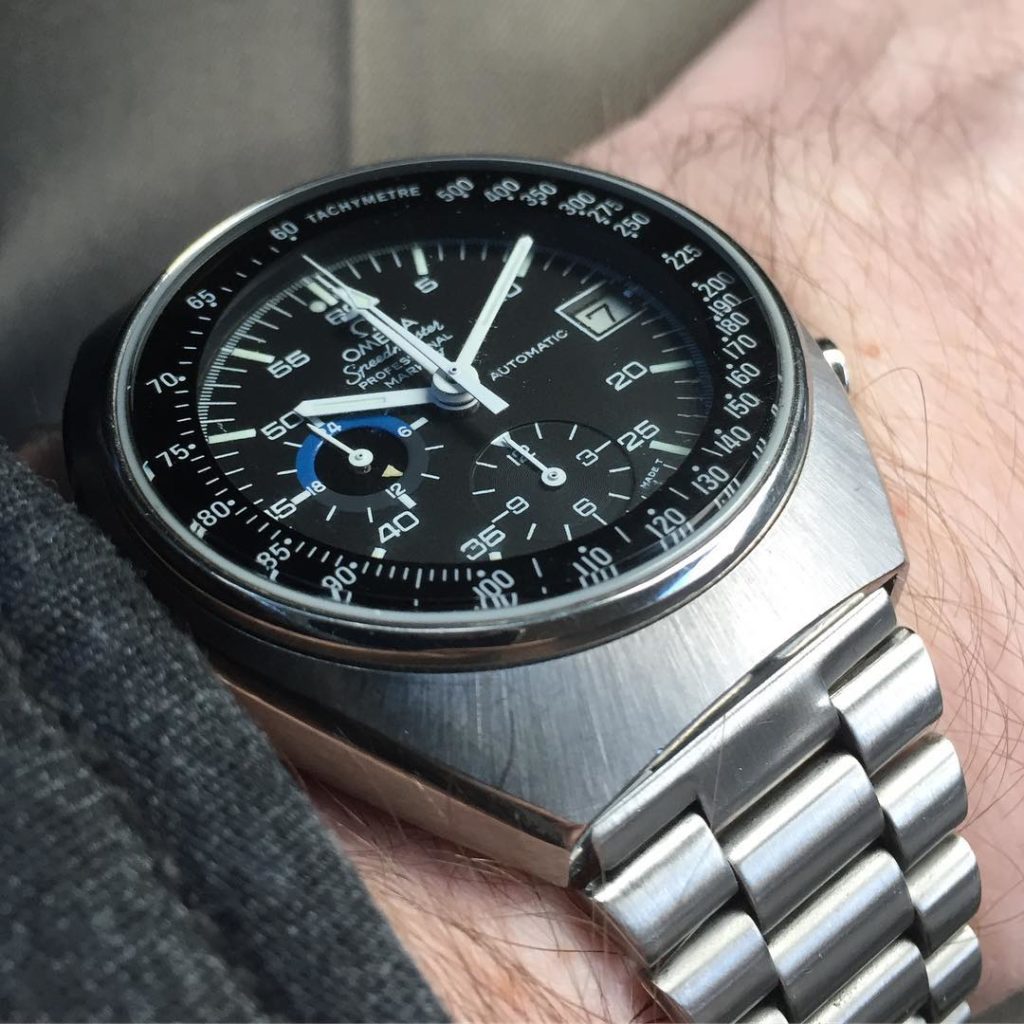
Caseback and Maker
For more information on casebacks, case manufacturers, and their maker’s marks, see the Caseback Collector’s Guide.
Mark IV casebacks are the same on the outside, but multiple versions of the inside exist. The first variant has a EPSA / diving bell logo, the other two do not and differ by the order of the text.
Variant 1
Maker: EPSA (diving bell symbol)
Caseback design: High-relief engraved medallion SPEEDMASTER, Hippocampus logo, Omega symbol
Variant 2
Maker: EPSA (no diving bell symbol)
Caseback design: High-relief engraved medallion SPEEDMASTER, Hippocampus logo, Omega symbol
Variant 3
Maker: EPSA (no diving bell symbol)
Caseback design: High-relief engraved medallion SPEEDMASTER, Hippocampus logo, Omega symbol
Specs

Production Estimates, Dates & Serial Number Range
Period ads show the 009 being marketed in 1974 and 1975. The Mark III certainly preceded the Mark IV, but it appears that the Mark IV didn’t necessarily replace the Mark III. In other words, both were offered side-by-side. Pinning down production dates for the Mark IV is tricky; I have yet to see any Mark IV Extracts from the Archives (email me if you have one!).
The lowest serial number I’m aware of for a Mark IV is 34,244,XXX. That serial puts it around other cal. 1040s manufactured in 1973 but certainly not part of the first wave of 1040s. This serial actually comes from Chuck Maddox’s article on the Mark Speedmasters. According to that article, the watch was actually found in a 007 case but Omega confirmed it to belong to a 009 manufactured in August 1973.
The serial numbers seem to then be spread out through the remainder of the 1040’s run. In fact one of the highest 1040 serials I’ve seen was in a 176.009 – 40,322,0XX. There is a huge concentration from 3559-3561.
**For more recent 176.009 serial number data, head over to the interactive serial number chart and filter by reference.

The Mark IV ref. 176.009 happens to be the specific only cal. 1040 watch that I’ve come across a production estimate for other than my own. In a Watchuseek thread from 2006, Marco Richon cites the production of the Mark IV as “near 10,000 if not less.” This lines up well with my own estimate of around 8,000-9,000 based on observed serial numbers.
Collectors Should Look For
- Collectors looking for an all-original example should seek out dial H1, while collectors looking for something a little unique or colorful can consider the service dial H2.
- H1 dials age like most Speedmasters from the 1970s, and either have attractive creamy patina or degraded black/green aging on lume. The dial itself usually ages well with little effect on text. If you see text that has worn or faded, this is usually a badly degraded example that should be avoided.
- H2 dials should look new and may have luminova or something other than Tritium, even if the “T”s are present. This lume is usually greener.
- These cases are easily scratched over time, and often that means that some well-meaning jeweler may have polished them in the past. Look for the original sunburst finish and sharp edges. If nothing else, the line between the top (radial brushed finish) and the bevel (smooth mirror finish) should be sharp and the finishes of these two areas should be noticeably different. Often the over-polished or overly scratched examples tend to get a uniform finish over time.
- Replacement/Service dials are very common, and don’t seem to impact value greatly. It can be tough to tell a more modern service dial from a clean original due to the lack of Ts on original dials. I tend to assume any dial or hands that don’t show obvious aging or patina to be modern.
- Hands should be white and “Speedmaster-style”, similar to Speedmaster 125 or Mark III (with black dial).
From My Collection
176.009 ST – Speedmaster Mark IV
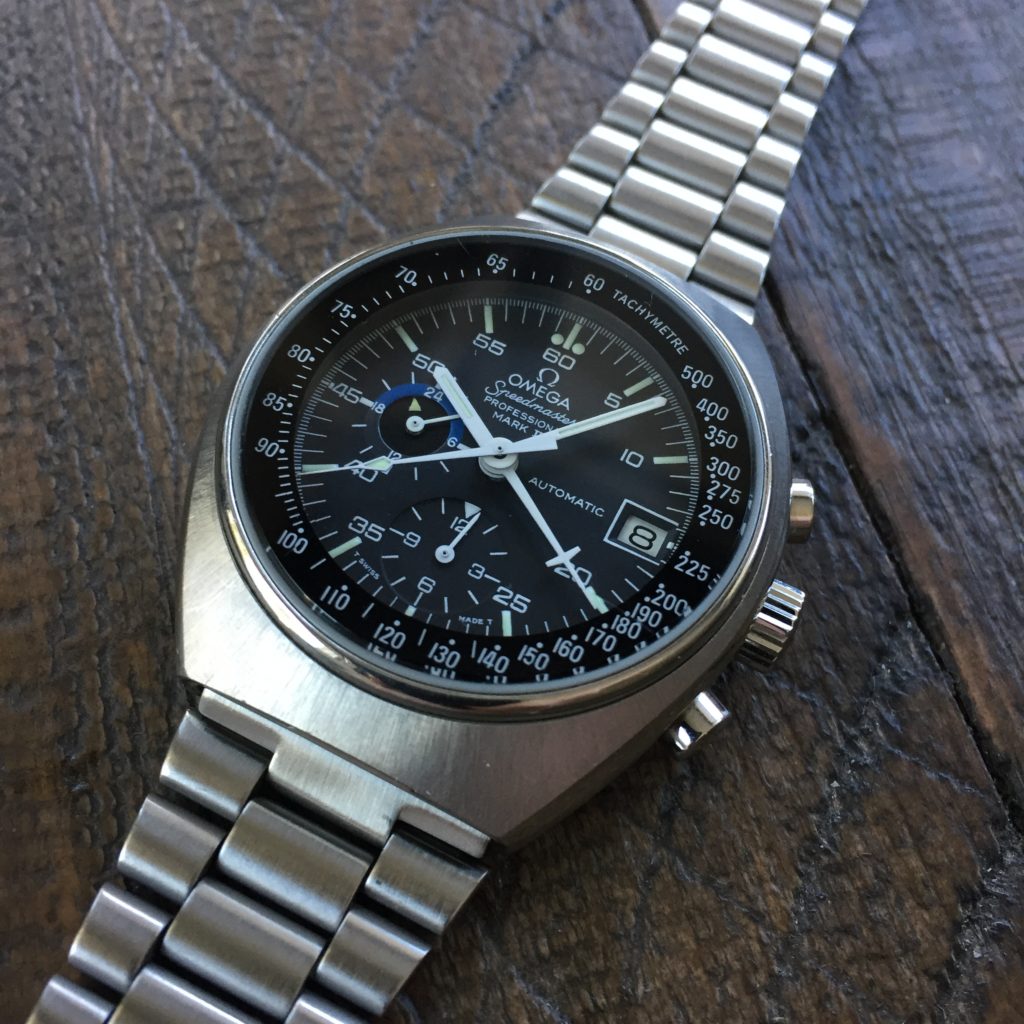
This watch is an Omega restoration, completed in 2009. I sought it out specifically because of the service dial, which features dial H2. That dial’s main differentiation is the blue color on the day/night 24-hour indicator at 9:00. The original dials (H1) used grey instead of blue.
The case has been nicely restored, although the previous owner and I have put a few scratches on the case since that restoration. The hands and dial have the strong glow of a modern watch. Note the dial still has Ts around “SWISS MADE”, even though I’m certain this is not a tritium dial.
The dial is another 1162, the default bracelet of the era for this and many other references. The serial number is 35603XXX.
Further Reading
- Chuck’s article on Mark Speedmasters.
- From my blog: The service dial with a “touch of blue”.

